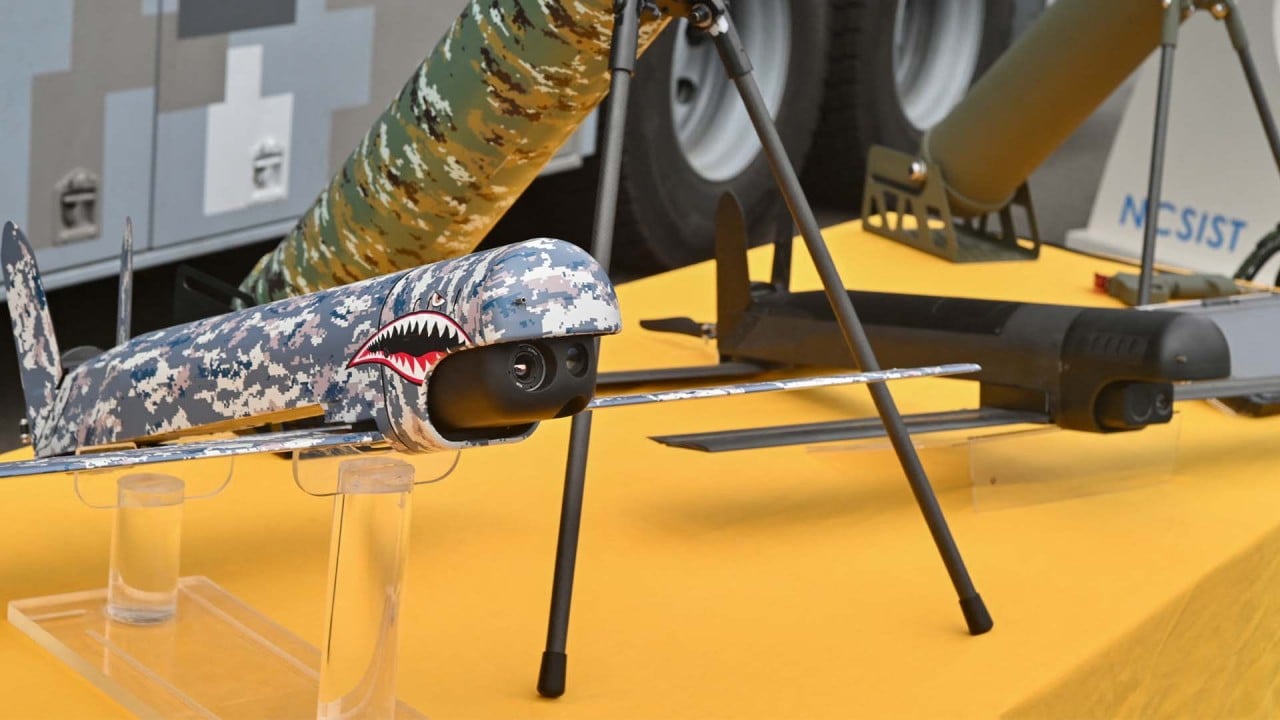
Taiwan weighs options for ageing fleet of Mirage 2000 fighter jets
- Defence Minister Chiu Kuo-cheng says they still perform well but ‘over time’ there will be an issue
- He tells lawmakers that the air force is assessing whether to replace or upgrade the warplanes
Built by Dassault Aviation, the aircraft entered service in 1997. To keep them in service they will need a system upgrade, but Dassault no longer produces this type of jet and is reportedly asking for an eye-watering sum to do the update.
Taiwanese Defence Minister Chiu Kuo-cheng was grilled by lawmakers on Thursday about whether the Mirage fleet would be retired or upgraded, as the PLA rapidly expands its fleet of more advanced and powerful fighter jets.
Chiu told the legislative meeting that the Mirage fleet still performed well but “over time” there would be an issue with the ageing fighter jets, which are based in Hsinchu, in the island’s north.
“Of course, there is an age concern for the jets and we will make certain plans about this,” he said.
Pressed on whether the Mirage fleet would be retired or sold, Chiu said: “The air force is making an assessment on whether to replace or upgrade them. All these would be options – the air force is still studying which one to choose.”
Taiwan’s ban on Chinese tourists set to ease in ‘huge’ lift after 3-year hiatus
The Mirage 2000s were Taiwan’s most powerful warplanes in the 1990s and the mainstay of the air force. Fifty-four of the aircraft are still in operation after six were damaged in crashes, and Taiwan has a maintenance service agreement with France that expires in 2026.
The island has asked Dassault to update the fighter jets several times, but – allegedly under pressure from Beijing – the French company is said to have demanded a high price for the upgrade.
When Taiwan bought the Mirage fleet, it also ordered 460 Magic missiles and 960 Mica missiles. It has allocated US$16.7 million for the island’s top weapons maker, the National Chung-Shan Institute of Science and Technology, to extend the life of these short-range air-to-air missiles.
Taiwan is also modernising other fighter jets. Its fleet of 141 F-16A/B Fighting Falcon fighter jets are being updated to F-16 Vipers with the help of US defence contractor Lockheed Martin. That upgrade is expected to be completed by the end of this year. And 130 of its Indigenous Defence Fighters were upgraded in 2018, also with US help.
In 2019 – after the island’s request for F-35s was rejected by Washington – Taiwan ordered 66 F-16 Block 70s from the US. The first two were due for delivery in the third quarter of this year.
However, Chiu on Thursday said the first delivery had been postponed to the fourth quarter of next year because of flight control software problems. He said the full delivery was still on track to meet the original schedule of 2026.
“In principle, by 2026 the 66 aircraft will all have arrived – there is absolutely no problem with this,” he said.
Taiwan has been under constant military pressure from Beijing, which views the island as part of its territory to be taken under control – by force if necessary. Most countries, including the US, do not see Taiwan as an independent state but are opposed to a change of the status quo by force.



